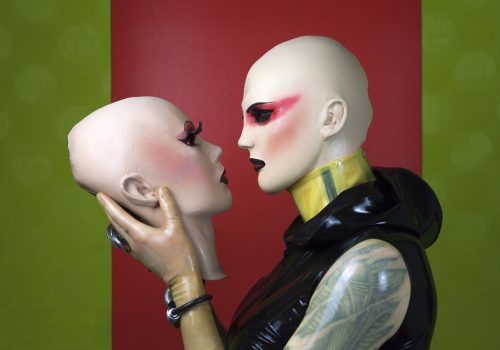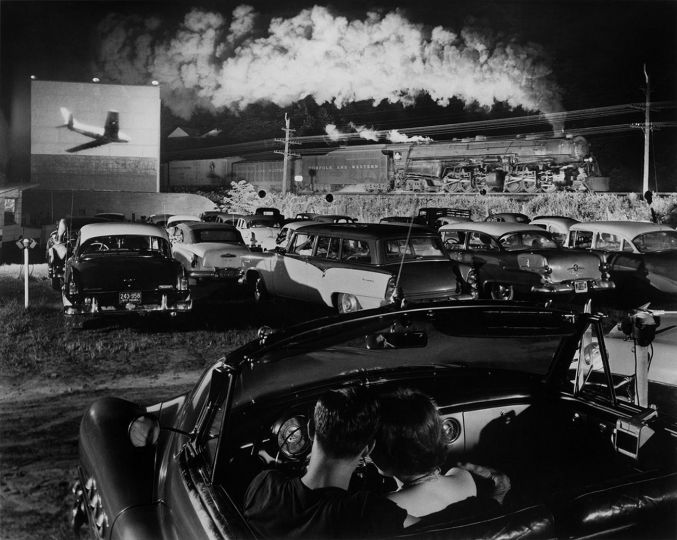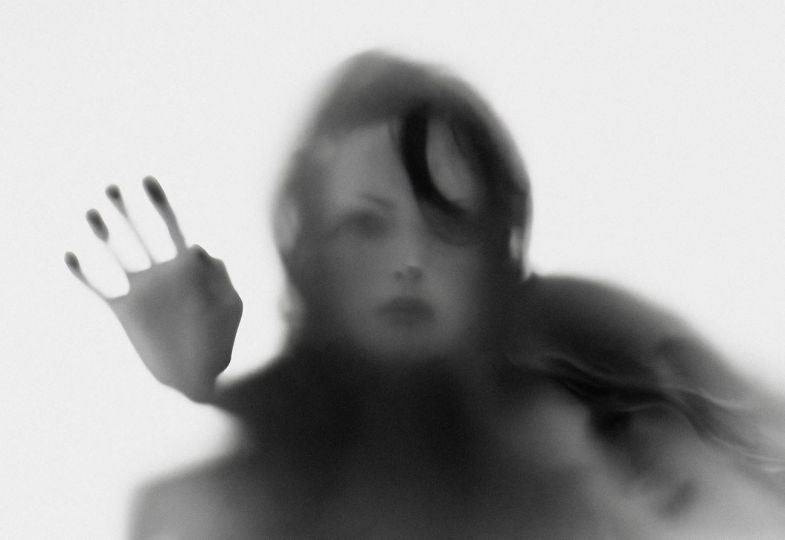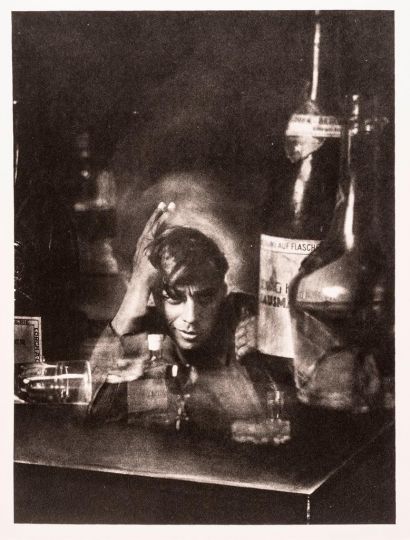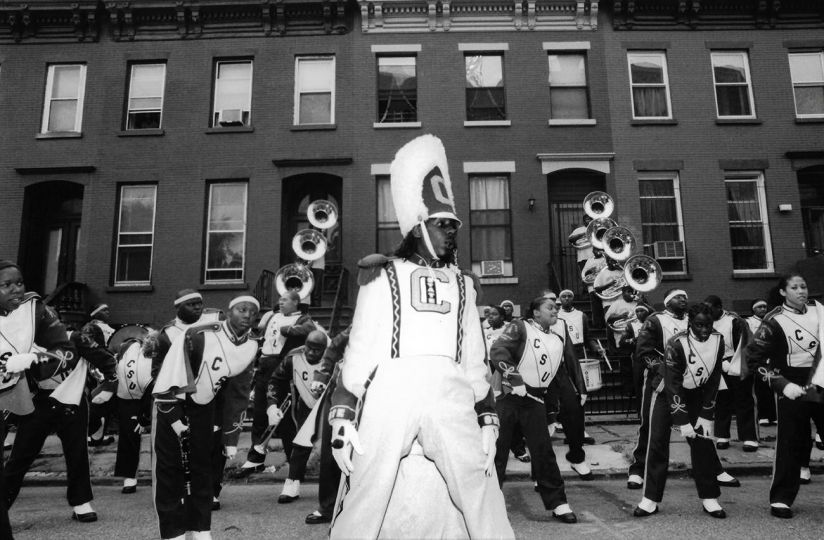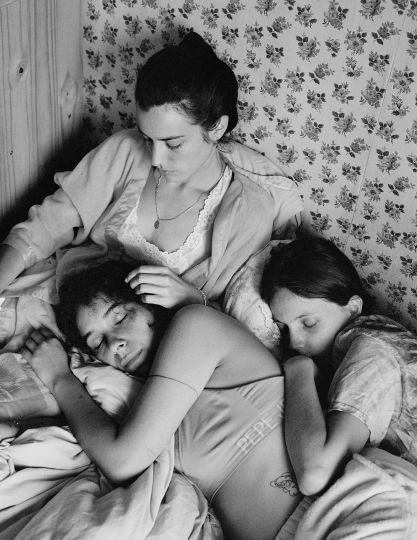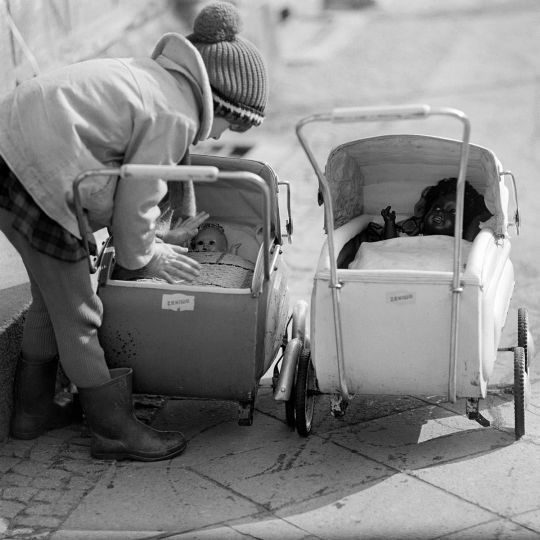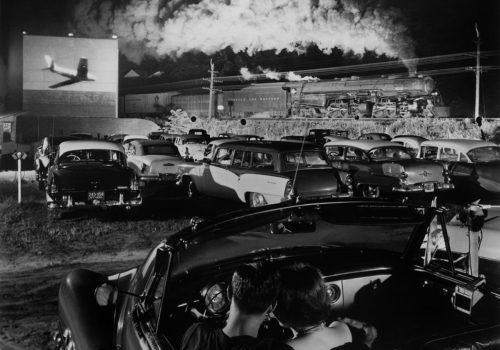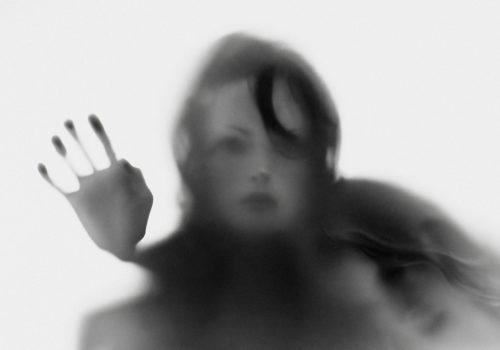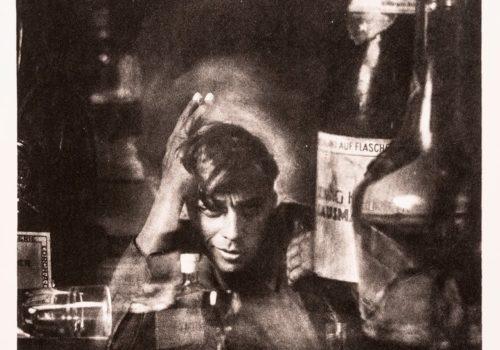What are young contemporary photographers doing and who are they today? This is the question that the exhibitions Zeitgest, (“In the Air of Time”) and Showcase, at the Robert Capa Center are exposed as part of the program Parallel Intersection Budapest 2019, hundreds of images of 57 photographers from 29 nations.
Created in 2017, the PARALLEL program, conceived and directed by the Portuguese association Procur.arte and supported by the Creative Europe program, brings together no less than 18 organizations from the world of photography from 16 European countries. Together, their objectives are to set up, for four years, a support and exhibition platform for new European artists and curators and to promote a fluid and functional link between them and the exhibitors (museums, galleries and festivals). Each year they break down their actions into two phases of work: selection and tutoring of artists and curators; then in a second time setting up exhibition platforms.
The Robert Capa Center in Budapest, Hungary, organized this month the “Intersection” phase of this program. This event closes the second year of this initiative and inaugurates the upcoming one. The center welcomes for the occasion the works of participating photographers in two different exhibitions. First of all in the showcase exhibition commissioned by István Virágvölgyi, we discover the portfolios in the form of posters of the third cycle artists of the program (third year), selected in 2019. The thirty photographers presented in this exhibition will be those that we will find at future exhibitions organized by the platform throughout the year. Indeed, throughout this year they will be accompanied by member institutions and tutors to work on a corpus of works that will be presented during the next Intersection phase of 2020.
The selection is impressive eclectic, among them we could find, recent graduates such as Domonkos Varga and more confirmed photographers such as George Selley (HSBC Award finalist).
In a second time the exhibition “Zeitgeist”, commissioned by Judit Gellér and Emese Mucsi, brings together the works of the artists of the second cycle and is divided under four themes: Post-Truth, Anthropocene, Mystique, and Identity. The exhibited works give us an overview of current issues and questions, the aspirations and objectives of people living in the first quarter of the 21st century.
In the first section of the “post-truth” exhibition, a word declared by British scientists as word of the year 2016, artists play and play with documentary photography by questioning their credibility while testing the credulity of spectator. The works deal with global and local political decisions affecting our society, such as the principles governing climate change (Diogo Bento), the question of the proliferation of pests in public spaces (Dániel Szalai) or the products of the pharmaceutical industry promising miraculous effects (Marie Lukasiewicz).
According to the definition, “The Anthropocene”, the Human Era, is a term related to the chronology of geology proposed to characterize the time of Earth’s history that began when human activities have had a significant global impact on the terrestrial ecosystem. The artists in this section work with different sub-themes of the Anthropocene. Some works deal with the global ecological crisis and the relationship between the individual and the environment in this context (Martin Eberlein, Mateusz Kowalik). Other series investigate the ongoing transformation of the key symbols of the natural world due to the climate crisis, and the impact of these changes in multiple domains, by searching for a contemporary and personal vision of the cultural and economic crisis, which afflicts the Mediterranean area, the heart of European civilisation (Rocco Venezia) ; or the ocean as a mass of water of great natural and political importance on the west coast of the United States (Garrett Grove). There are also projects that make visible the intermediate and vulnerable situation of asylum seekers by telling their stories in a semi-personal way (Sinead Kennedy). All these works are not activist initiatives, avoiding proposals for didactic solutions, artists seek to tell stories and raise awareness of individual responsibility using visual representations.
The series presented in the “Mystic” section deal with the daily spiritual or ritual routines that are integral to our contemporary lives. Indeed, as in all periods of crisis, we are seeing today a growing return to spiritual practices. Thus the artist André Viking Andersen, invites us to discover and follow the practice of a South African shaman (Sangoma) which is based on our dreams to respond to situations of anxiety and stress. Louisa Boeszormeny, for her part, gives us a glimpse of the unconscious in the context of hypnotherapy sessions organized in the hope of finding solutions to traumas.
Finally, the works chosen for the “Identity” section deal with individual and collective identity problems, self-awareness, reflection and personal stories. Among the works of art in this section, some use masks (Agata Wieczorek) that hide and transform the face and body of those who have worn them to give them a different personality. Jessica Wolfelsperger exposes the same problem using the photo as a mirror, reflection on the era of selfies. The majority of works provide insight into the inner space, time, and critical processes of a life (Matthew Thompson). The artists evoke their past and discover their trauma and their wounds (Ela Polkowska). Whether it’s looking at a series of photos about artists’ past or scrutinizing the present, the works of art presented are revealing, they hide and offer the viewer many possibilities of identification.
Artistes exhibited Showcase: Anka Gregorczyk (PL), Anna Siggelkow (DE), Carola Lampe (DE), Caroline Kolkman (NL), Cecilie Nicoline Rasmussen (DK), Cian Burke (IE), David Barreiro Vila (S), Diego Ballestrasse (AR), Domonkos Varga (HU), Elsa Gregersdotter (SE), George Selley (UK), Georgs Avetisjans (LV), Gustavo Balbela (BR), Indré Urbonaité (LT), Joachim Bøgedal (SE), Johanna Karjalainen (FI), Jordi Barreras (ES), Joshua Tarplin (US), Jošt Dolinšek (SI), Margherita Muriti (IT), Negar Yaghmaian (IR), Sara Perovic (HR), Sara Wu (TW), Shelli Weiler (US), Simone Sapienza (IT), Søren Lilholt (DK), Theo Ellison (UK), Vitaliy Galanzha (UA), Yushi Li (CN), Yuxin Jiang (CN)
Artistes exhibited Zeitgest : Dániel Szalai (HU), Diogo Bento (PT), Dries Lips (BE), José Alves (PT), Marie Lukasiewicz (FR), Agata Wieczorek (PL), Christel Thomsen (DK/UK), Ela Polkowska (PL), Federico Ciamei (IT), Hannamari Shakya (FI), Ines Marinho (PT), Jessica Wolfelsperger (CH/DE), Matthew Thompson (IE), Louisa Boeszormeny (DE), Fábio Cunha (PT), Laura Konttinen (FI), Nils Stelte (DE), André Viking (DK), Roisin White (IE), Ana Zibelnik (SI), Cihad Caner (TR/NL), Garrett Grove (US), Jake Mein (NZ), Martin Eberlen (UK), Mateusz Kowalik (PL), Rocco Venezia (IT/GR), Sinead Kennedy (AU)
MEMBERS OF THE PLATFORM
Procurarte Lisbonne, Portugal (Leader du projet)
Le Château d’Eau Toulouse, France
The Finnish Museum of Photography Helsinki, Finlande
Fondazione Fotografia Modena Modena, Italie
FotoFestiwal – Foundation of Visual Education Lodz, Pologne
Format International Photography Festival – Derby Quad Derby, UK
Galleri Image Aarhus, Danemark
ISSP Riga, Lettonie
KATALOG – Journal of Photography & Video Kerteminde, Danemark
Kaunas Photography Gallery Kaunas, Lituanie
Landskrona Foto Landskrona, Suède
NGO Mystetski Mandry / Odesa Photo Days Odesa, Ukraine
Organ Vida Zagreb, Croatie
PhotoIreland Dublin, Ireland
Robert Capa Contemporary Photography Center Budapest, Hongrie
Tbilisi Photography & Multimedia Museum Tbilisi, Georgia
UGM – Maribor Art Gallery Maribor, Slovenie
YET Magazine Lausanne, Suisse
Free admission
- 09. 14. – 2019. 10. 06.
Every day from 11h to 19h
Closed holidays
Capa Center
Curators: Judit Gellér, Emese Mucsi, István Virágvölgyi

